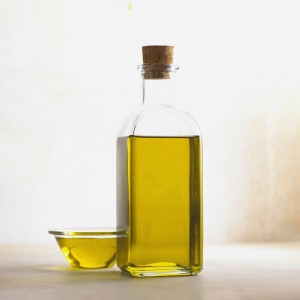Women and men are susceptible to stroke. In fact, as many as 480,000 people will have one this year. Age makes it more likely you will have one, and that risk increases if a parent or relative suffered one. While you can’t stop the aging process or your genetic predisposition, you can lower your risk. Here are eight things you can do today to prevent a stroke.

1. Lower Your Blood Pressure
Blood pressure in one of the biggest risk factors for stroke, after age and family history. The lower your blood pressure, the less likely you are to have a stroke. You do that by:
- Limiting salt intake to less than 1,500 milligrams
- Increasing the amounts of fruits, vegetables, fish, whole grains and low fat dairy foods you eat
- Exercising more
- Quitting smoking
2. Drink One Alcoholic Beverage a Day
Only one drink will benefit you, so be sure to limit your alcoholic beverage to that. While it’s best to drink red wine, beer and hard liquor can also help you lower your risk of stroke, according to Harvard’s Dr. Rost.
3. Take a Vitamin B Complex Daily
Researchers have found that the arteries of people who take a vitamin B complex are wider and more open. This means it reduces cholesterol and blood pressure, which are two risk factors in having a stroke.
4. Get Seven Hours of Sleep
Sleeping seven hours a night seems to lower stroke risk, according to Harvard researchers. Sleeping more than that doesn’t seem to further lower your risk because sleeping more than 10 hours can increase stroke risk by as much as 63 percent.
5. Use Olive Oil
Following a healthy diet can significantly reduce your risk for stroke. Besides eating more colorful fruits, leafy green vegetables, fish, and lean meats, olive oil is another staple you may want to start using. It’s good for you and lowers your risk for stroke, according to a study that showed that people who regularly used olive oil cut their chances of stroke by 40 percent.
6. Practice Anger Management
Those who are aggressive and become overly angry are more at risk for stroke. When you become upset, try to step away from the situation or alleviate it quickly. This way, you can release the tension that the situation is causing.
7. Take a Low Dose of Aspirin
Blood clots that block blood vessels to the brain causes a stroke, so thinning the blood can prevent clots from forming. Taking a low dose of aspirin helps prevent blood clots from clogging blood vessels, which lowers your risk for stroke.
8. Create Healthy Habits
You can start lowering your risk for stroke today. It may be difficult to implement new tasks into your daily routine, especially if you have daily demands that don’t allow you to be flexible with your lifestyle. For example, you may find it difficult to get the seven hours of recommended sleep, or you might find it difficult to eat as healthy as you should.

![]() Stress is another factor in stroke risk, so try not to overwhelm yourself. Work on lowering your stress, and do things to help remind yourself because every choice can make a difference in your stroke risk.
Stress is another factor in stroke risk, so try not to overwhelm yourself. Work on lowering your stress, and do things to help remind yourself because every choice can make a difference in your stroke risk.
Try these tricks:
- Set your vitamins and low-dose aspirin aside. Take them each night or morning with a meal. You will then have a much easier time remembering.
- Drink your one alcoholic beverage every day after work. Use it as a stress reliever or as a complement to your meal.
- Fill an oil bottle with olive oil and place it next to your stove. When you’re cooking, you’ll be reminded to reach for it.
- Schedule your day to include seven hours of sleep a night. It can take a while to fall asleep and you might wake up in the middle of the night, so set your alarm for eight hours of sleep.
- Quit smoking or reduce how much you smoke. As you reduce the number of cigarettes you smoke, you will reduce your stroke risk. Pay attention to how many cigarettes you smoke today, and then tomorrow cut it down by one. For each day afterwards, cut it down by another one until you don’t feel you can go any lower.
Armed with information and actionable tips, you can feel good about yourself. You can lower your risk of suffering from one of the most common, deadly medical conditions among men and women.
Leave a Reply